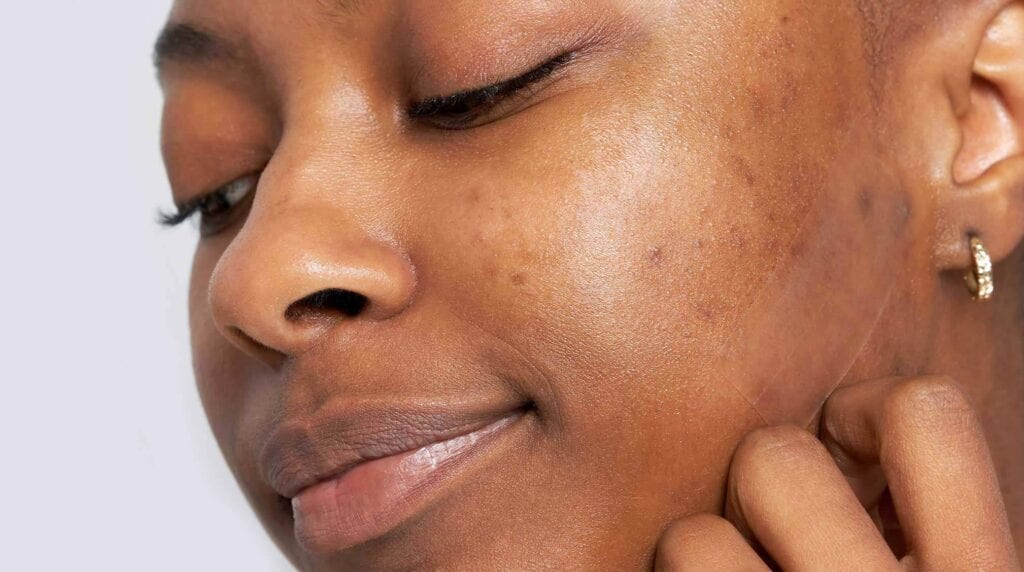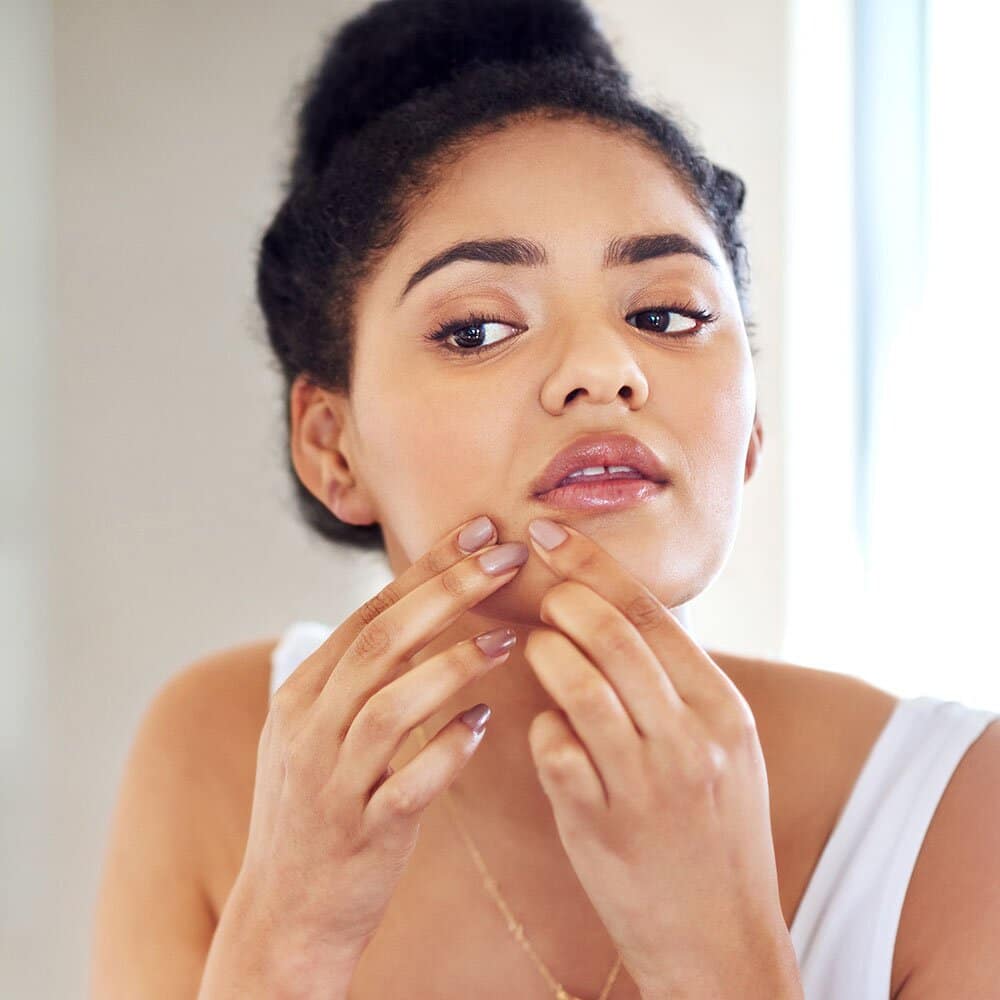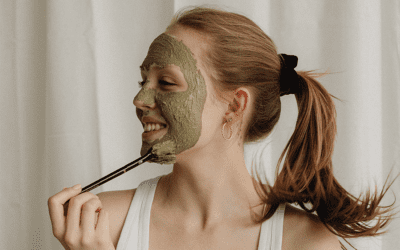If you have ever had or are currently suffering from acne scars, most likely, you have a lot of questions. You might also be wondering how to get rid of acne scars.
Some of the questions associated with these scars are:
- What makes a person more likely to have scars?
- What causes acne scars?
- What can I do to inhibit scarring?
Fortunately, we have some info on the cause of scars, causes of acne, and the best methods to keep those ugly scars off your pretty face.
What Causes Acne?
A pimple (acne lesion) occurs when oils, bacteria, and dead skin block and inflame the pores, the small openings in the skin that allow sweat and oil to rise to the exterior.
About 40,000 skin cells come out of the skin every hour; however, those dead skin cells clog a pore at times. Clogged pores are small and cause “blackheads or whiteheads.” Sometimes the pores become swollen and result in other forms of acne.
In case you have acne, you are not alone! It is the most widespread skin disorder on the globe.
Around 80% of persons between 11 and 30 years get it. Young people get acne due to the changing hormones.
Grown-ups may get acne if they have stress, menstrual cycle, environment, petroleum products, and family planning pills, even though hormones may also have a part.

Forms of Acne
Scarring may seem like a double punishment: you were dealing with acne lesions, now you have the scars as a reminder. Pimples occur when the hair pores (or follicles) on your skin become clogged with sebum and dead cells. A clogged follicle is the best place for bacteria to develop and form the red, pus-filled bumps recognized as pimples.
Spots come in various forms:
Mild spots: This causes the black and whiteheads that majority of us get
Moderate spots: This might cause red, papules (inflamed pimples), and red acne lesions with white cores (known as pustules)
Severe spots: This results in sore, pus-filled lumps or cysts (called nodules) under your skin
What Causes Acne Scars?
When spots form on the skin, the body’s natural restorative processes are triggered, just as they do for a wound or disease; the issue is, it is not always an impeccable system.
Acne occurs when the skin’s pores get blocked by dead cells and an excessive amount of oil. Sometimes it will appear near the skin surface–meaning that it will likely heal after some time with less scarring.
However, because acne takes root further in your skin, it takes a long time to heal. Since this goes deeper and damages more skin tissue, it regularly leaves marks.

Once an outbreak occurs, your body might try to patch up itself by replacing lost tissues that got destroyed. Scarring happens when the body generates too little or too much of the tissue.
When your body makes excess tissue, the pimple becomes an augmented scar referred to as a hypertrophic scar (or, in serious conditions, a keloid). In contrast, insufficient tissue causes skin depressions, referred to as atrophic scarring.
The dark spots you at times get after a major outbreak differs. Technically, they aren’t scars at all.
They are changes in skin color (also called pigmentation). When a pimple bursts or opens in another way, your skin should close and cover the depression. The body is pretty good at repairing itself; however, after predominantly severe trauma, such as a pit from a broken acne injury, your body does not always cover itself perfectly.
Often the skin covering the wound changes texture, tone, or color. In other instances, blood vessels that have ruptured due to a broken pimple leave a spot on the skin. We commonly call this hyperpigmentation or dark spots.
Even though you do not break out acne, you can still perceive brown or dark red spots on the skin, particularly inflamed or deep cases.
But don’t panic – if you’ve been holding back from bursting that lesion, these spots usually go away within several months.

How to Get Rid of Acne Scars
Sorting through the many treatments available for acne can be overwhelming and frustrating.
Our team of certified skincare experts has helped people treat both scarrings that results from pimples and active spots outbreaks. Here are tips on how to get rid of acne scars.
1. Dermabrasion
In dermabrasion, the skin’s top layer is removed using the laser or a particularly made wire brush. Your skin will appear red and painful for several months after the procedure, but as it recovers, you should note an improvement in the look of your marks.
2. Laser Therapy
Laser therapy may be used in the treatment of mild to moderate spots marks. There are two forms of laser treatment:
Non-ablative laser medication: It uses lasers to stimulate new collagen (a kind of protein discovered in the skin). The collagen helps in repairing some of the harm caused by the scar and improving its appearance
Ablative laser medication: The laser is used to eliminate a small skin area around the mark to produce a fresh, smooth-looking part of the skin
3. Punch Methods
These methods are used in the treatment of chariot scars and ice pick marks. There are three types of punching techniques:
Excision of the punch: Used to treat small ice pick marks. We get rid of the scar surgically, and the residual wound gets sealed. After healing of the wound, the skin will remain flattered and more even.
Punch lift: Used in the treatment of boxcar marks. The scar base is surgically eradicated, leaving the edges of the mark in position. The foot is then reattached at the sides but raised so that it is flush with the skin’s surface. This makes the mark much less visible.
Punch graft: Used in the treatment of deep scars. As with punch excision, the mark is removed; however, the wound gets “plugged” using a sample of membrane taken from other parts of your body.
4. Subcision
Subcision refers to a surgical treatment used in the cure of rolling scars. At the time of the surgery, the top layer of your skin gets removed from the core tissue. This permits blood to accumulate under the upset area.
The blood lump helps create connective tissue, which drives the rolling scar upward so that it is flush with the other parts of the skin’s surface. After subcision is complete, additional treatment, for instance, dermabrasion and laser treatment, can be utilized to further enhance the scar’s appearance.

What Can I Do to Avoid Acne Scars?
Squeezing the pimples is the safest way to get a scar. In cases of lesions, “hands-off” is the perfect policy. Poking, touching, or picking a pimple adds more fat to your skin and results in deeper trauma.
These two increase the possibility of scarring.
We know how difficult it can be not to pop a pimple. Even when you know your skin will hurt in the long run, at times, you just need to remove that thing immediately.
Before reaching out and hitting that black spot quickly, bear in mind that while it can fix a problem in the short term, it will only cause you pain later on.
So please do everything you can to avoid taking that lesion out of its despair.
Conclusion
Everyone has acne once in a while, and at times scars when it recovers. Acne marks differ in look depending on the severity and type of spots.
There exist numerous treatments for all types of acne scars. If you are concerned about acne marks, consult your dermatologist to create a treatment plan that is correct for you.





0 Comments